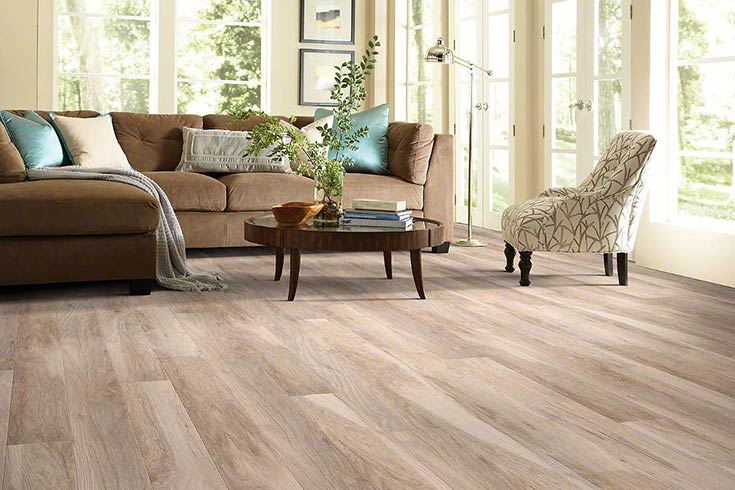Engineered flooring is quickly growing in recognition around the world as an affordable solution to wood flooring. While being significantly less expensive than a good wood floor, engineered flooring performs better in many ways which matches to describe its growing share of the market. Unlike laminate floors, engineered features 100% hardwood and also the surface layer from the floor is definitely an authentic, prime cut of hardwood. The main difference is based on the truth that engineered flooring boards comprise a variety of layers, the top layer of costly oak or walnut and also the core layers of cheaper, highly durable plywood. It’s this layered construction which makes engineered flooring both cheaper and much more stable because it is less vulnerable to the development and warping that may befall wood flooring.
With regards to lounging engineered flooring, you can lay it as being a floating floor as lengthy because the substrate is appropriate as well as an appropriate underlay can be used. Lounging a floating floor is frequently less expensive than choosing a glue or screw lower approach and enables you easy accessibility subfloor as needed. However, to put a floating floor, the substrate will have to be both level and moist proof. An uneven concrete subfloor can be simply fixed through the use of a self-levelling compound that instantly fills lower areas while runny and dries to provide a wonderfully fine surface.
If lounging your floating engineered floor on the concrete base, a moist proof membrane is going to be needed to avoid moisture in the subfloor rising and inside your floor. Fortunately, many underlay happen to be developed that contain a moist proof layer and supply this protection while developing a cushioned base for that floor. Many types of underlay can be found, some with heat flow qualities, and a few made to seem proof your floor but all have a similar fundamental principle of supplying a cushioned surface for the floating floor to relax upon.
Since you have selected the right underlay as well as your preferred engineered flooring, you’ll most likely be pretty keen to obtain began immediately but it’s absolutely crucial that you let your floor to acclimatise to the new setting before beginning cellular phone. During production and storage, most likely your floor will will be in different temperature and humidity conditions to individuals it’ll find itself inside your room even though modifying to those new conditions, your floor will probably either expand or contract. Most tradesmen would advise departing your wooden flooring within the room for approximately ten days just before installation to match these adjustments as it might be disastrous if these variations occur following the floor is laid.
Engineered flooring frequently includes tongue and groove edge profiling which makes it simple to slot planks together but many modern engineered flooring now features the simple click installation system which fits on the identical principle but causes the planks to lock together once slotted removing the requirement for glues. When lounging your floating floor, you need to leave a 10mm gap between your walls from the room. It is because although now acclimatised, it’s still likely the your floor will contract and expand throughout its lifetime and requires space to achieve this to prevent cupping or splitting. This 10mm gap could be discretely hidden by using a scotia or skirting board to which your brand-new floating engineered flooring may have space to grow.


